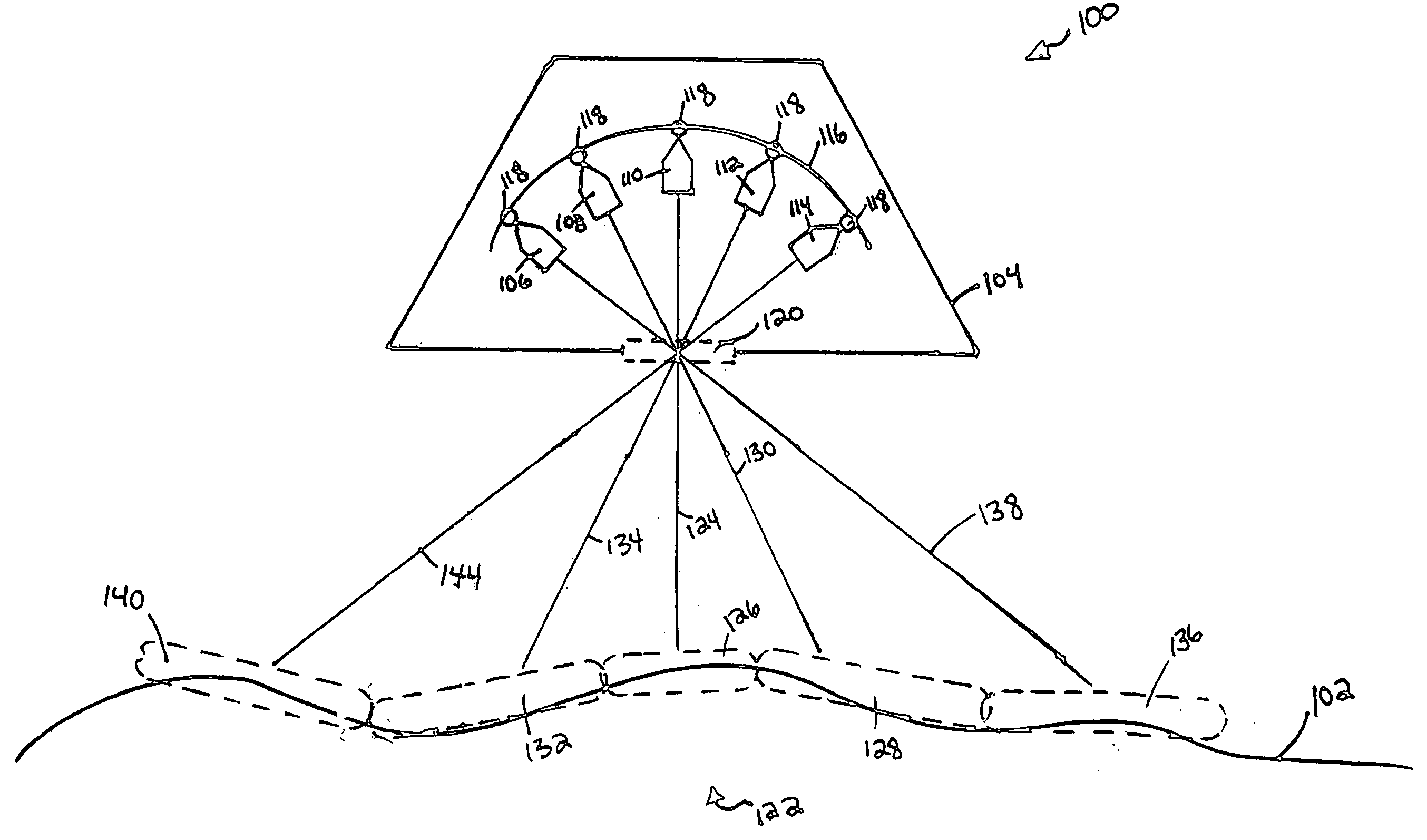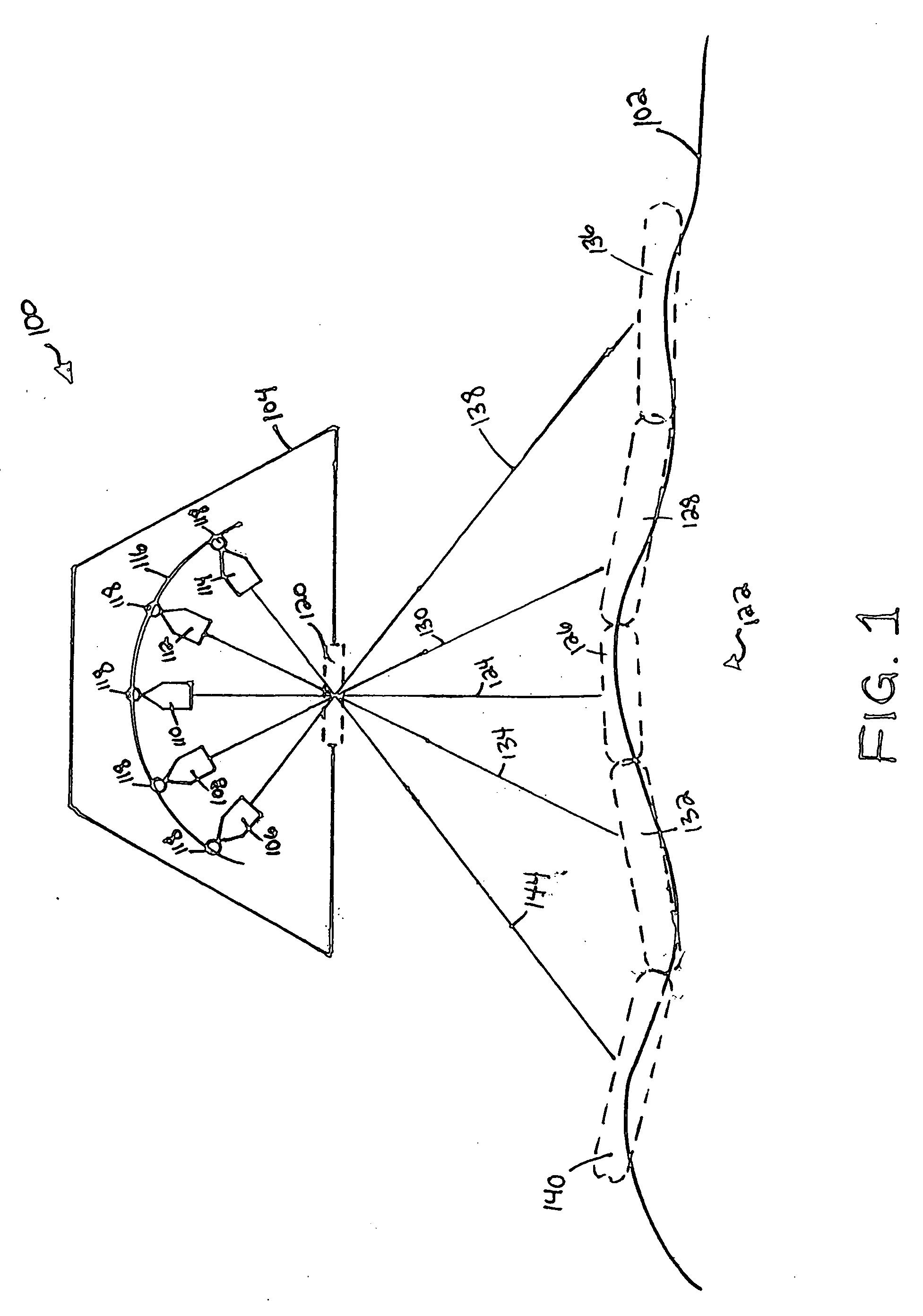System and method for mosaicing digital ortho-images
a mosaicing system and digital ortho-image technology, applied in the field of remote imaging techniques, can solve the problems of large scale factor, difficult even to robust imaging systems, time-consuming and laborious rendering processes, etc., and achieve the effects of high quality, improved image fidelity and clarity, and efficient and reliable stitching
- Summary
- Abstract
- Description
- Claims
- Application Information
AI Technical Summary
Benefits of technology
Problems solved by technology
Method used
Image
Examples
Embodiment Construction
[0029] While the making and using of various embodiments of the present invention are discussed in detail below, it should be appreciated that the present invention provides many applicable inventive concepts, which can be embodied in a wide variety of specific contexts. The specific embodiments discussed herein are merely illustrative of specific ways to make and use the invention and do not limit the scope of the invention.
[0030] The present invention provides a versatile system for efficiently and reliably stitching together images, collected from high-resolution digital imaging sensors, into a seamless, high quality, mosaic image covering a wide FOV. The mosaicing processes of the present invention efficiently stitch (or mosaic) thousands of small, digital sub-images into a single, high-quality composite image. Processing the image data in digital format provides greater efficiency and lowers processing costs. The present invention provides processes that tonally balance images...
PUM
 Login to View More
Login to View More Abstract
Description
Claims
Application Information
 Login to View More
Login to View More - R&D
- Intellectual Property
- Life Sciences
- Materials
- Tech Scout
- Unparalleled Data Quality
- Higher Quality Content
- 60% Fewer Hallucinations
Browse by: Latest US Patents, China's latest patents, Technical Efficacy Thesaurus, Application Domain, Technology Topic, Popular Technical Reports.
© 2025 PatSnap. All rights reserved.Legal|Privacy policy|Modern Slavery Act Transparency Statement|Sitemap|About US| Contact US: help@patsnap.com



